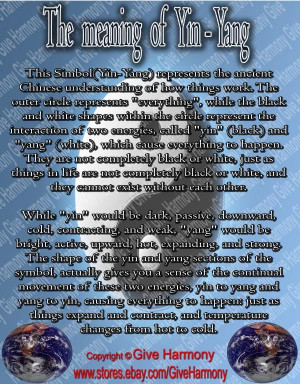
Like other religious and astrological emoji such as the om symbol, the yin-yang emoji appears as white on a purple square.

Unicode 1.0 approved the yin-yang symbol for computers in 1993 and added it to its Emoji 1.0 set in 2015. The term yin-yang is first found in English in the 1850s, and it spread in the 20th century especially thanks to interest in Eastern philosophy, non-Western medicine, and martial arts. In the symbol, yin is represented by the color black and yang, white. their interrelationship came to be depicted in the taijitu, or “Diagram of the Great Ultimate”-better known by Westerns as the yin-yang symbol, first appearing in the 1000s CE and attributed to the philosopher Zhou Dunyi. The balance of yin and yang were seen to influence health and order within an individual, society, and the entire universe.Īnd.

Yang (“sun” or “male”) represents light, masculinity, activity, and the heavens. Yin, Chinese for “female” or “moon,” represents darkness, femininity, passivity, and the earth. The school focused around the idea that all life revolved around five basic elements (metal, wood, water, fire, and earth), governed by the forces of yin and yang, part of the qi, or vital life force, of the cosmos. Sometime between roughly 700–400 BCE, Yin-yang was the name of a school of teaching, with chief thinker: alchemist Zou Yan. One of the first mentions of yin-yang for the concept of cosmic harmony comes from a verse in the Shih Ching, a 6th-century BCE collection of poems compiled by Confucius. The concepts of yin and yang have been around since at least the 1300s b.c., when they were found referenced in inscriptions related to Chinese divination of the weather.


 0 kommentar(er)
0 kommentar(er)
